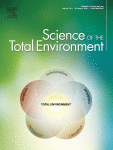|
Autors/es
Bedrossiantz, Juliette; Martínez-Jerónimo, Fernando; Bellot, Marina; Raldua, Demetrio; Gómez-Canela, Cristian ; Barata, Carlos ; Barata, Carlos
|
Abstract
This study addresses short-term habituation of the escape response in the aquatic crustacean Daphnia magna evoked by sudden changes in light intensity, using a high-throughput system. Daphnia magna exhibits a marked phototactic behaviour and swim away from light to avoid predation by fish. Currently, there is no information available on the habituation of this phototactic response. The Daphnia photomotor response assay (DPRA) measures the distance moved after a sudden increase in light intensity. Using DPRA, it is possible to determine not only the magnitude of the phototactic response, but also its habituation after repetitive cycles of light and darkness. The progressive reduction observed in response to a series of light stimuli in the proposed assay meet the criteria for habituation. Most cholinergic and serotonergic modulators enhanced photomotor responses and reduced habituation. Dopaminergic and histaminergic modulators also reduced habituation, whereas diazepam was the only compound that increased habituation. Imidacloprid, apomorphine, diphenhydramine, diazepam, and memantine decreased photomotor responses. Thus, the DPRA was also predictive in assessing the effects of neuroactive and neurotoxic environmental contaminants such as selective serotonin reuptake inhibitors, diazepam, organophosphorous, and neonicotinoid pesticides. We conclude that the proposed DPRA may be an effective screening tool for compounds that can impair predation avoidance behaviour in aquatic organisms.
|

WoS
Scopus
Altmetrics
  
|
